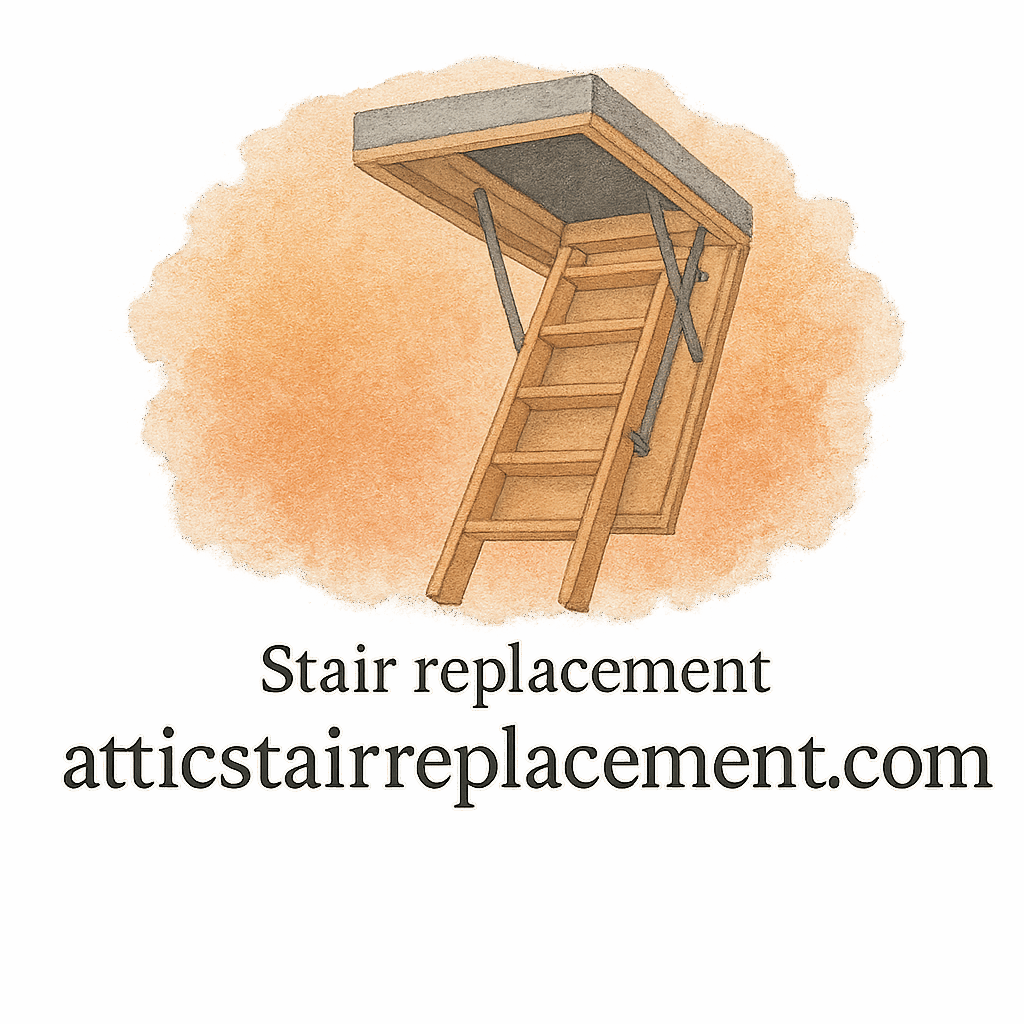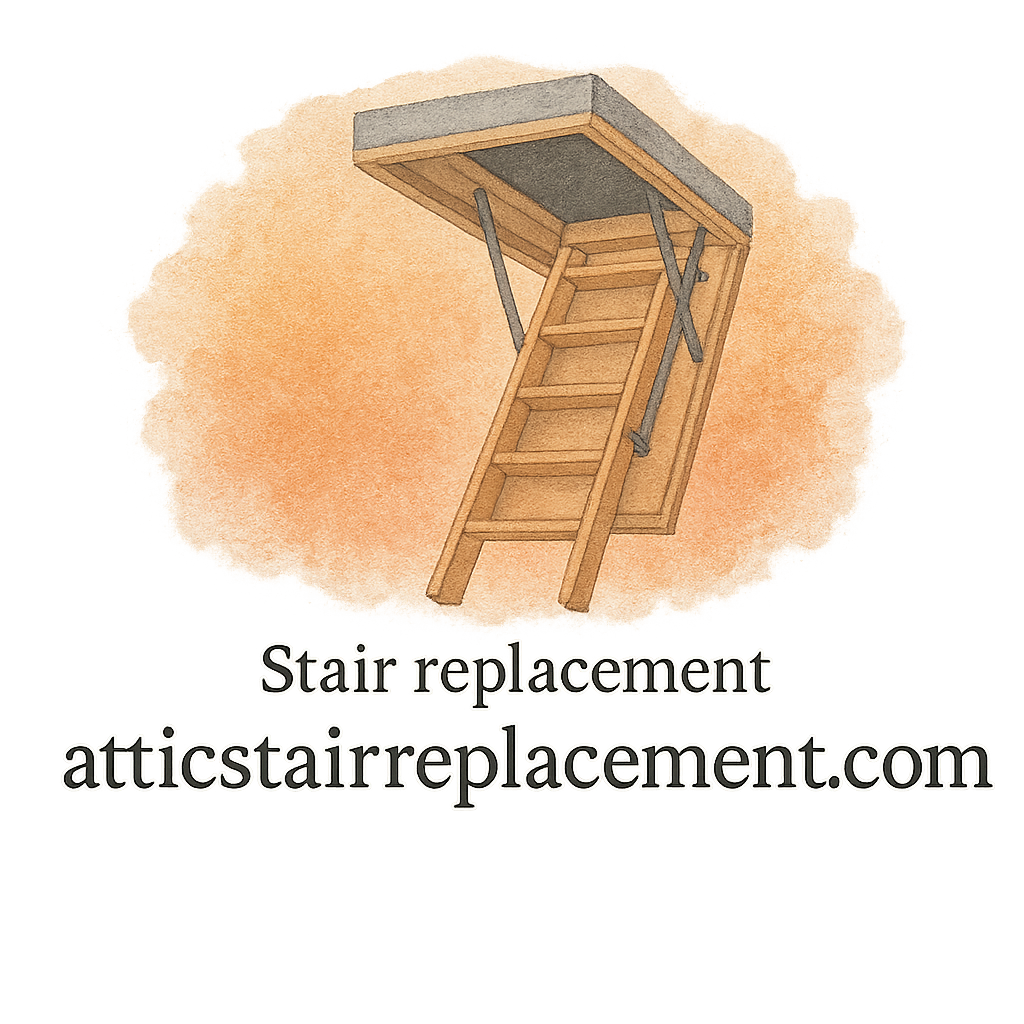Introduction: Why Save Money on Attic Stair Replacement?
Attic stairs are one of those hidden heroes in your home. They’re practical, functional, and give you access to extra storage space. But when they start to squeak, wobble, or break, replacing them becomes inevitable. The problem? Attic stair replacement can get pricey if you’re not careful. The good news is, with the right strategies, you can cut costs significantly—without cutting corners on safety or quality.
This guide covers 10 cost-saving tips for DIY attic stair replacement, showing you how to plan smart, shop wisely, and avoid mistakes that drain your wallet.
Understanding the Basics of Attic Stair Replacement
What Is an Attic Stair Replacement?
Attic stair replacement means swapping out your old, worn-out access ladder for a new one. This could involve folding stairs, telescoping stairs, or scissor-style stairs, depending on your attic design and space.
Common Reasons Homeowners Replace Attic Stairs
- Safety concerns (wobbly or weak steps)
- Improved accessibility
- Remodeling or upgrading your home
- Energy efficiency improvements
Average Costs of Attic Stair Replacement
On average, attic stair replacement costs between $300 and $1,000 when hiring a contractor. A DIY installation, however, can slash those costs to less than half—sometimes under $200, depending on the model and materials.
Cost-Saving Tip #1: Plan Ahead and Budget Wisely
Create a Realistic Budget
Before you rush to the store, map out your budget. Think about the stair type, material, insulation, and even finishing touches. This will prevent overspending mid-project.
Identify Potential Hidden Costs
Hidden costs, like trim repair, ceiling patching, or tool rental, often sneak in. By anticipating these expenses, you’ll avoid last-minute financial stress. (See hidden cost tips here).
Cost-Saving Tip #2: Choose the Right Attic Stair Type
Folding vs. Telescoping vs. Scissor Stairs
Each type has pros and cons. Folding stairs are budget-friendly, telescoping models save space, and scissor stairs are stylish but pricier. Choose based on your attic use and budget.
Durable and Long-Lasting Materials
Don’t just go for the cheapest option. A durable, heavy-duty stair may cost more upfront but saves you from frequent replacements. Check durability advice.
Cost-Saving Tip #3: Buy at the Right Time
Seasonal Discounts and Sales
Home improvement stores often offer discounts during holidays or seasonal clearances. Buying during off-peak months can save you 20–30%.
Comparing Online vs. Local Stores
Sometimes online retailers have better deals, but don’t ignore local stores—you can save on shipping and even negotiate discounts. Browse product reviews before purchasing.
Cost-Saving Tip #4: Reuse and Recycle Materials
Salvaging Parts From Old Stairs
Hinges, bolts, and even wood panels can be reused from your old attic stairs. Reusing saves money and is eco-friendly.
Creative DIY Material Hacks
Got leftover lumber from another project? Use it for reinforcements. Recycling reduces costs while keeping your project sustainable.

Cost-Saving Tip #5: Do It Yourself With Expert Guidance
Step-by-Step DIY Guides
Installing attic stairs yourself is doable with proper instructions. You can check DIY installation guides to walk you through the process.
Learning From Professional Advice
Even if you’re going DIY, take time to read expert advice. It prevents costly mistakes and boosts your confidence.
Cost-Saving Tip #6: Use the Right Tools (Don’t Overspend)
Borrowing or Renting Tools
Instead of buying tools you’ll rarely use, borrow from a neighbor or rent from a hardware store.
Essential Tools Checklist
Must-have tools include:
- Tape measure
- Drill
- Level
- Screwdrivers
- Saw
Keeping it simple saves cash.
Cost-Saving Tip #7: Focus on Energy Efficiency
Adding Insulation Around Attic Stairs
Gaps around your attic ladder let air escape, driving up energy bills. Adding insulation reduces long-term costs.
Preventing Long-Term Energy Loss
Seal edges properly to prevent drafts. Over time, energy efficiency upgrades pay for themselves. See more preventative tips.
Cost-Saving Tip #8: Prevent Future Repairs With Proper Maintenance
Regular Checks and Care
Inspect your attic stairs every few months. Tighten screws, lubricate hinges, and clean debris.
Extending Lifespan of Your Stairs
Routine maintenance and repair prevents costly replacements later.
Cost-Saving Tip #9: Avoid Common DIY Mistakes
Measuring Incorrectly
Incorrect measurements lead to wasted money on wrong-sized stairs. Measure twice, cut once.
Choosing Cheap Over Quality
It’s tempting to grab the cheapest stair, but poor quality means more replacements. Always balance cost with job quality.
Cost-Saving Tip #10: Know When to Call a Professional
Complex Installations That Require Contractors
If your attic opening needs resizing or structural adjustments, call a contractor. See contractor tips.
Balancing DIY Savings vs. Job Quality
Sometimes hiring a pro saves money in the long run by avoiding damage or unsafe installs.
Conclusion: Smart Choices Lead to Bigger Savings
Replacing attic stairs doesn’t have to be expensive. By planning carefully, shopping smart, and learning DIY techniques, you can save hundreds of dollars. Remember, the key is balance—know when to save and when to invest in quality. Your attic will be safer, your wallet happier, and your home improvement skills sharper.
For more resources, check out Attic Stair Replacement, where you’ll find guides, tips, and product reviews to make your next project a success.
FAQs
1. What is the cheapest attic stair option?
Folding attic stairs are usually the most affordable option for homeowners.
2. Can I install attic stairs without professional help?
Yes, with the right DIY guides and tools, most homeowners can handle basic installations.
3. How much money can I save with DIY attic stair replacement?
You can save anywhere from 40–70% compared to hiring a contractor.
4. Are telescoping stairs worth the investment?
Yes, especially if you have limited space. They may cost more upfront but provide long-term convenience.
5. How do I maintain attic stairs to avoid costly repairs?
Regular lubrication, tightening screws, and cleaning dust buildup can extend their lifespan.
6. What are the most common attic stair replacement mistakes?
Incorrect measurements, choosing poor-quality materials, and skipping insulation are the top mistakes.
7. Should I buy a heavy-duty attic ladder for long-term savings?
Absolutely. A heavy-duty stair can last for decades, saving you from frequent replacements.


